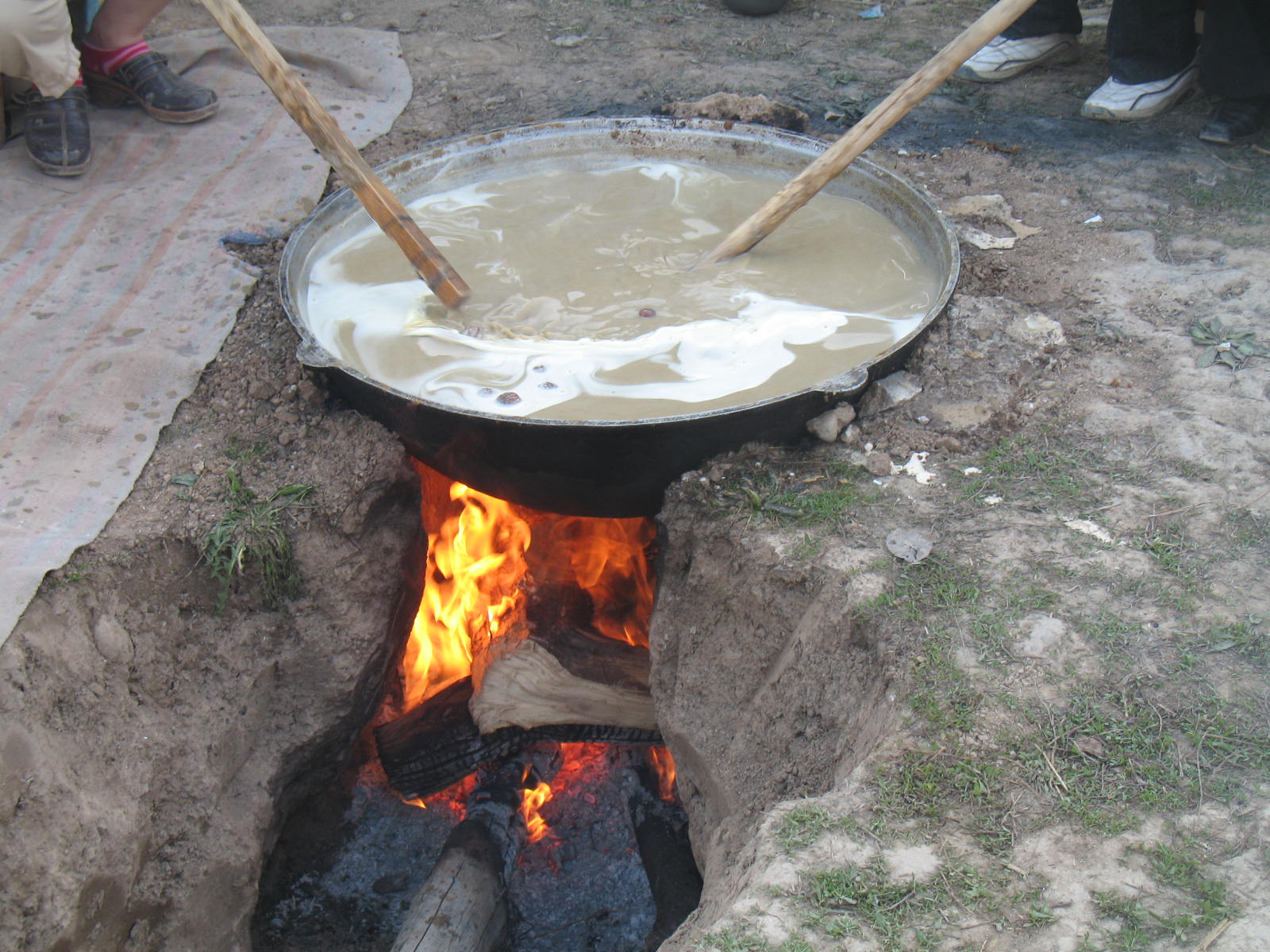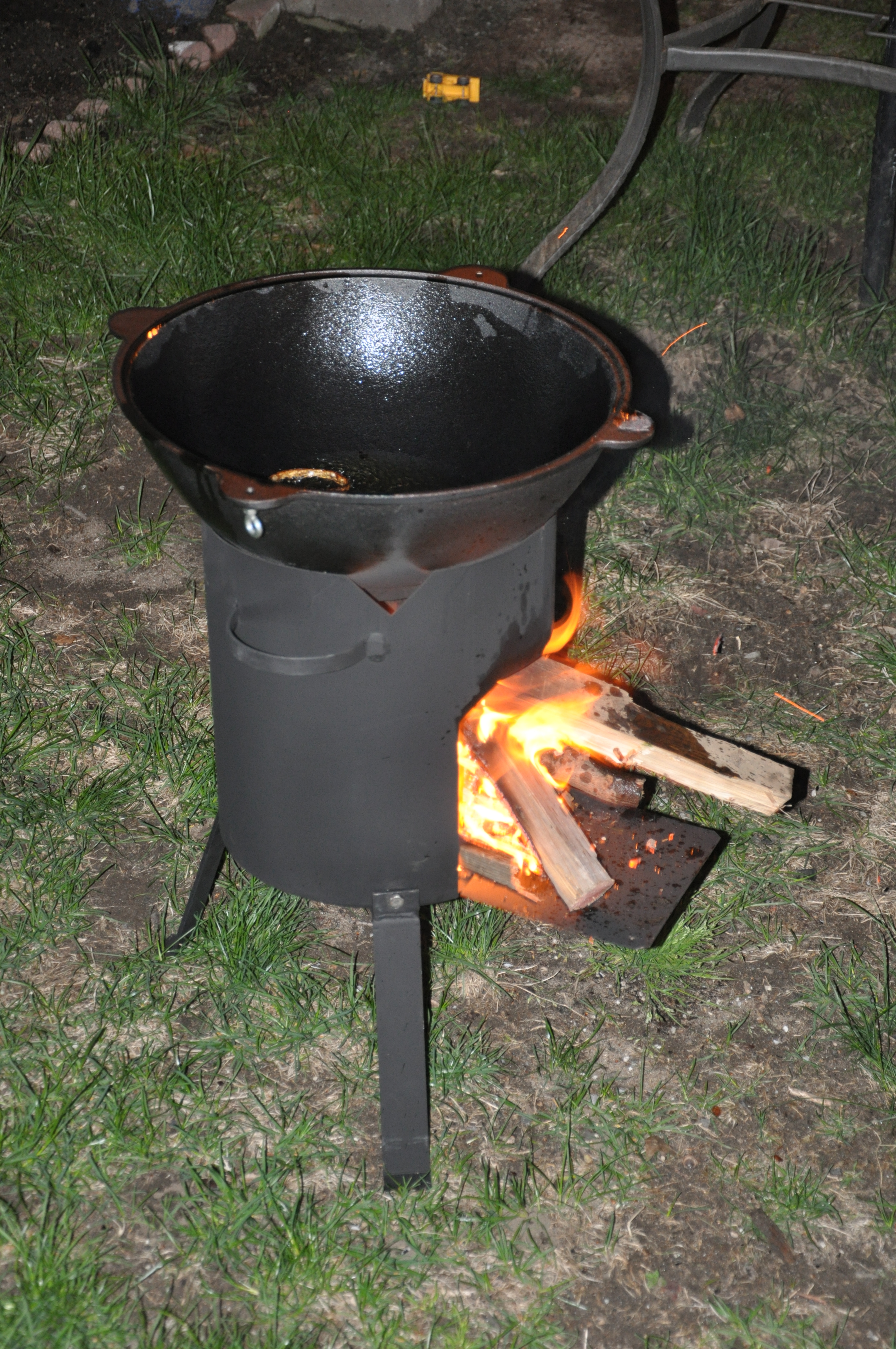Qozon on:
[Wikipedia]
[Google]
[Amazon]
 A kazan or qazan is a type of large
A kazan or qazan is a type of large
 Kazans seem to have been invented by the Turkic nomads and were used as their basic cooking utensil. They resemble in shape the Chinese
Kazans seem to have been invented by the Turkic nomads and were used as their basic cooking utensil. They resemble in shape the Chinese
File:Shorpo cooking in Kazan.jpg,
 A kazan or qazan is a type of large
A kazan or qazan is a type of large cooking pot
Cookware and bakeware is food preparation equipment, such as cooking pots, pans, baking sheets etc. used in kitchens. Cookware is used on a stove or range cooktop, while bakeware is used in an oven. Some utensils are considered both cookware ...
used throughout Central Asia
Central Asia, also known as Middle Asia, is a subregion, region of Asia that stretches from the Caspian Sea in the west to western China and Mongolia in the east, and from Afghanistan and Iran in the south to Russia in the north. It includes t ...
, Afghanistan
Afghanistan, officially the Islamic Emirate of Afghanistan,; prs, امارت اسلامی افغانستان is a landlocked country located at the crossroads of Central Asia and South Asia. Referred to as the Heart of Asia, it is bordere ...
, Azerbaijan
Azerbaijan (, ; az, Azərbaycan ), officially the Republic of Azerbaijan, , also sometimes officially called the Azerbaijan Republic is a transcontinental country located at the boundary of Eastern Europe and Western Asia. It is a part of t ...
, Turkey
Turkey ( tr, Türkiye ), officially the Republic of Türkiye ( tr, Türkiye Cumhuriyeti, links=no ), is a transcontinental country located mainly on the Anatolian Peninsula in Western Asia, with a small portion on the Balkan Peninsula in ...
, and the Balkan Peninsula, roughly equivalent to a cauldron
A cauldron (or caldron) is a large pot ( kettle) for cooking or boiling over an open fire, with a lid and frequently with an arc-shaped hanger and/or integral handles or feet. There is a rich history of cauldron lore in religion, mythology, and ...
, boiler
A boiler is a closed vessel in which fluid (generally water) is heated. The fluid does not necessarily boil. The heated or vaporized fluid exits the boiler for use in various processes or heating applications, including water heating, centr ...
, or Dutch oven. They come in a variety of sizes (small modern cooking pots are sometimes referred to as kazans), and are often measured by their capacity, such as "a 50-litre kazan". Usually their diameter is half a meter. Kazans are made of cast iron
Cast iron is a class of iron– carbon alloys with a carbon content more than 2%. Its usefulness derives from its relatively low melting temperature. The alloy constituents affect its color when fractured: white cast iron has carbide impur ...
or in modern times aluminum
Aluminium (aluminum in American and Canadian English) is a chemical element with the symbol Al and atomic number 13. Aluminium has a density lower than those of other common metals, at approximately one third that of steel. It ha ...
and are used to cook a wide variety of foods, including ''plov'' ( pilaf), sumalak, shorpa, kesme
Kesme or erişte is a type of egg noodle found in various Turkic countries, Iran and Afghanistan. It is also found in Turkish cuisine and is called ''erişte'' and “kesme” in modern standard Turkish. The word itself is a nominalisation of ...
, and bawyrsaq, and as such are an important element in celebrations when food must be prepared for large numbers of guests.
Kazans may be suspended over a fire in a variety of ways. Sometimes metal frames (a tripod called ''sajayaq'') are made, or alternatively (especially for large kazan), a hole may be dug in the ground which will hold the kazan and provide enough space underneath to keep a fire under it—in this case, an access hole is built in the side to allow the fire to be tended, and to let in air. Smaller kazans may be used on sually gasstoves with the help of a specially designed piece of metal that lets the heat f the flametransfer to the kazan while at the same time holding it upright and steady.
Etymology
The origin of the word ''kazan'' can be ultimately traced back toOld Turkic
Old Turkic (also East Old Turkic, Orkhon Turkic language, Old Uyghur) is the earliest attested form of the Turkic languages, found in Göktürk and Uyghur Khaganate inscriptions dating from about the eighth to the 13th century. It is the old ...
verb ''kaz-'', meaning "gouge, carve, hollow out" and present participle
In linguistics, a participle () (from Latin ' a "sharing, partaking") is a nonfinite verb form that has some of the characteristics and functions of both verbs and adjectives. More narrowly, ''participle'' has been defined as "a word derived from ...
suffix of ''+(g)An''. The word evolved to Middle Turkic as ''kazğan'', meaning "big copper vessel". Oldest written record of the word in any Turkic language is dated back to Mahmud al-Kashgari's 1073 work ''Dīwān Lughāt al-Turk
The ' ( ar, ديوان لغات الترك, lit=Compendium of the languages of the Turks) is the first comprehensive dictionary of Turkic languages, compiled in 1072–74 by the Turkic scholar Mahmud Kashgari who extensively studied the Turkic ...
''. It is also mentioned in Codex Cumanicus
The Codex Cumanicus is a linguistic manual of the Middle Ages, designed to help Catholic missionaries communicate with the Cumans, a nomadic Turkic people. It is currently housed in the Library of St. Mark, in Venice (BNM ms Lat. Z. 549 (=1597 ...
.
History
 Kazans seem to have been invented by the Turkic nomads and were used as their basic cooking utensil. They resemble in shape the Chinese
Kazans seem to have been invented by the Turkic nomads and were used as their basic cooking utensil. They resemble in shape the Chinese wok
A wok (; Pinyin: ; Cantonese ) is a deep round-bottomed cooking pan from China. It is believed to be derived from the South Asian karahi. It is common in China and similar pans are found in parts of East, South and Southeast Asia, as well as ...
or the Indian karahi
A ''karahi'' (; as, কেৰাহী, kerahi, bn, কড়া, koṛā, hi, कड़ाही, kaṛāhī, Marathi: कढई, ur, ; also ''kadai, kerahi, karai, kadhi, kadahi, kadhai'' ''sarai'', or ''cheena chatti'') is a type of th ...
but differ from them in shape and also lack a handle. The Scythians
The Scythians or Scyths, and sometimes also referred to as the Classical Scythians and the Pontic Scythians, were an ancient Eastern
* : "In modern scholarship the name 'Sakas' is reserved for the ancient tribes of northern and eastern Centra ...
and other Iranian peoples
The Iranian peoples or Iranic peoples are a diverse grouping of Indo-European peoples who are identified by their usage of the Iranian languages and other cultural similarities.
The Proto-Iranians are believed to have emerged as a separat ...
inhabitants of the western steppes before the Turkic migrations, used different cooking utensils. They used round bottomed clay and bronze pots having a more big-bellied shape than the hemispherical profile of the kazan. Some peoples neighboring the Turkic peoples adopted the kazan for its usefulness. Especially in making '' pilaf'' (rice) for occasions like weddings.
In the Ottoman Empire
The Ottoman Empire, * ; is an archaic version. The definite article forms and were synonymous * and el, Оθωμανική Αυτοκρατορία, Othōmanikē Avtokratoria, label=none * info page on book at Martin Luther University) ...
, the kazan was the common symbol of the janissary
A Janissary ( ota, یڭیچری, yeŋiçeri, , ) was a member of the elite infantry units that formed the Ottoman Sultan's household troops and the first modern standing army in Europe. The corps was most likely established under sultan Orhan ...
regiments and they would overturn it to indicate a quarrel with their superiors. This has led to the Turkish expression of "''Kazan devirmek''" "to overturn the kazan" as a synonym for mutiny. The kazans of Turkey have adopted the typical flat-bottomed shape of the middle east.
Gallery
Shorpo
Chorba or shorba (from dialectal Arabic ; from , 'to drink') is a broad class of stews or rich soups found in national cuisines across the Middle East, Central and Eastern Europe, Central Asia and the Indian subcontinent. It is often prepared ...
being made in a kazan in Kyrgyzstan.
File:Paloo cooking in a Kazan.jpg, ''Plov'' ( pilaf) being made in a kazan suspended above a fire using a metal frame.
File:Frying boorsoq.jpg, Kyrgyz boorsoq being fried in a stove-top kazan.
File:Plov122.jpg, ''Plov'' cooking in a kazan.
File:Комплекс Ахмеда Ясави; казан.jpg, Toy-kazan - translates to "wedding kazan", a kazan big enough to prepare food for wedding guests
Name of the cities
Gazandjyk or Kazandzhik currently Bereket - is a city in Balkan Province in westernTurkmenistan
Turkmenistan ( or ; tk, Türkmenistan / Түркменистан, ) is a country located in Central Asia, bordered by Kazakhstan to the northwest, Uzbekistan to the north, east and northeast, Afghanistan to the southeast, Iran to the sout ...
. The name is composed of ''Kazan'' and ''-jyk'', a diminutive suffix (denoting ''small'' in size), so the name can be translated into English as ''cauldron-ette'' or ''pot-kin''. Kazan
Kazan ( ; rus, Казань, p=kɐˈzanʲ; tt-Cyrl, Казан, ''Qazan'', IPA: ɑzan is the capital and largest city of the Republic of Tatarstan in Russia. The city lies at the confluence of the Volga and the Kazanka rivers, covering an ...
is the capital and largest city of the Republic of Tatarstan
The Republic of Tatarstan (russian: Республика Татарстан, Respublika Tatarstan, p=rʲɪsˈpublʲɪkə tətɐrˈstan; tt-Cyrl, Татарстан Республикасы), or simply Tatarstan (russian: Татарстан, tt ...
in Russia.
See also
*List of cooking vessels
This is a list of cooking vessels. A cooking vessel is a type of cookware or bakeware designed for cooking, baking, roasting, boiling or steaming. Cooking vessels are manufactured using materials such as steel, cast iron, aluminum, clay and va ...
* List of Uzbek dishes
This is a list of notable Uzbek dishes and foods. Uzbek cuisine is the cuisine of Uzbekistan. The cuisine is influenced by local agriculture such as grain farming. Breads and noodles are a significant part of the cuisine, and Uzbek cuisine has been ...
* Wok
A wok (; Pinyin: ; Cantonese ) is a deep round-bottomed cooking pan from China. It is believed to be derived from the South Asian karahi. It is common in China and similar pans are found in parts of East, South and Southeast Asia, as well as ...
Sources
{{reflist Uzbekistani cuisine Cooking vessels